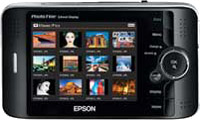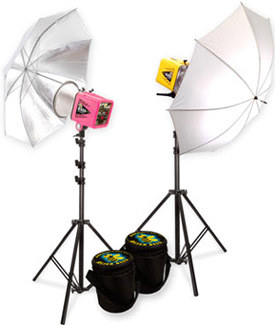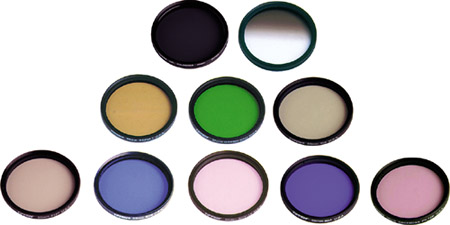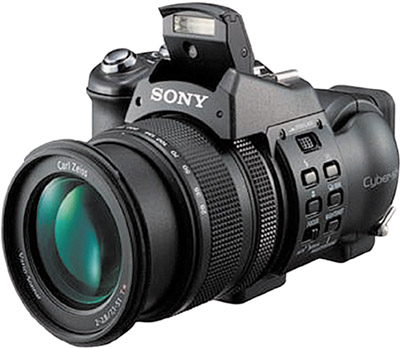| Photography has long been a great hobby for gadget lovers, even before it went all high-tech and digital. Today, digital photography affords one the opportunity to purchase all manner of fun gadgets, from the cameras themselves to a virtual plethora of add-ons and accessories lenses, filters, battery chargers, cases, you name it. Whether you're just starting out with digital photography or are an experienced shutterbug, the big question is where do you start that is, what type of digital camera should you buy? There's no single answer to this question, because the type of camera you buy depends on how exactly you plan to use it. Let me explain. Different Types of Digital Cameras There's no such thing as a typical digital camera. While a $200 point-and-shoot model and a $1,000 digital SLR both take digital pictures, they're so different in look, feel, operation, and features that they may as well be creatures from two different planets. The key, then, is determining how you want to use a digital camera, then choosing the right type of camera to get that particular job done. You won't find a one-size-fits-all solution, I'm afraid. That said, I think you can break down digital camera users into a handful of main groups: The casual snapper This describes the bulk of the digital photography market, of course. You don't take a lot of photos, but when you do you want them to count. You're mainly shooting photos of family get-togethers, vacations, outdoors weekends, and the like nothing too fancy, but important nonetheless. What you want is a camera that's fairly easy to use, without a lot of complicated features. You probably don't want something big and heavy; if you can slip the camera in your shirt pocket or in a purse, all the better. The right camera for you is a low-priced, compact, point-and-shoot model. You don't need to spend a lot of money on fancy features or lots of megapixels; something in the 3 5 megapixel range will do the trick. The eBay seller This is a new category of photographer, a by-product of the eBay online auction revolution. What's important here isn't size or price (although you don't want to spend any more than you have to); instead, you want a camera that shoots quality pictures indoors and close up. Look for a point-and-shoot model that offers good low-light performance and an easy-to-use macro mode. Again, you don't need to worry too much about the megapixels, as you can only upload low-resolution pictures for use in your auction listings. The shoot-it-for-keeps If you want to create something more than simple snapshots I'm talking high-quality photo prints, suitable for framing you need more than just a point-and-shoot camera. The cameras you're interested in are called prosumer models, in that they offer a lot of professional-level features in a consumer-friendly package. These cameras let you shoot high-resolution pictures, in the 6 8 megapixel range, that can be blown up to 8 x 10 or larger print sizes. You'll also get a better-quality lens, typically with a longer zoom (6X 10X), as well as the ability to bypass the automatic shooting mode and shoot with either aperture- or shutter-priority modes. Most prosumer cameras also feature metal bodies (instead of the plastic bodies found in most point-and-shoot cameras), electronic viewfinders (in addition to the standard large LCD monitor on the back), and intelligent hot shoes to which you can attach external flashes, strobe lights, and the like. Many of these cameras also let you save photos in the RAW file format, which is more versatile that JPEG or TIFF when it comes to post-photo processing in Adobe Photoshop or some similar program. Of course, you pay extra for all these features; a typical prosumer camera will cost you close to a thousand bucks, give or take. The aspiring pro Now we're into the really good stuff, a category known as the digital single-lens reflex (D-SLR) camera. A D-SLR is the digital equivalent of a high-end SLR film camera and takes higher-quality pictures than even the prosumer digital models. You get lots of flexibility with a D-SLR, including the ability to use different types of lenses. (That's right, in a D-SLR the lenses are interchangeable.) These cameras aren't cheap, although they're not that much more expensive than a good prosumer model; prices start at around a grand, and go up from there. I'll talk more about D-SLRs in a few pages, so read on if you want to learn more. 
Sorting Through the Features Whichever type of camera you settle on, there are some key features that you need to be aware of. Here's a short list: Picture resolution This is measured in megapixels. (One megapixel equals a million pixels, natch.) The more megapixels, the sharper your pictures will be. Most decent point-and-shoot cameras today have a resolution in the range of 3 5 megapixels; prosumer and D-SLR models go up to 8 megapixel resolution. Why do you need more megapixels? It's simple, really. If you want to create large-size prints, you have to fill up all that space with picture information. The more pixels, the more picture information and the bigger the prints you can make. With an 8-megapixel camera, you should be able to make prints up to 14'' x 17''; lower-resolution point-and-shoot cameras can only make prints half that size. 
Zoom lens This helps you get up close to distant subjects. Ignore the digital zoom specs (that's an electronic zooming effect that creates blocky-looking results) and focus on the optical zoom. Most low-end cameras have a 3X zoom; prosumer models go up to a 10X zoom. When you buy a D-SLR, you can choose lenses with all manner of zoom ranges. As you might expect, the bigger the zoom, the better. Size and weight Many point-and-shoot cameras are little bigger than a credit card and weigh less than half a pound. Prosumer models are bigger and heavier, and D-SLRs even more so. Photo pros actually like the heft of a "real" camera, although most casual snappers prefer something smaller and lighter. This is definitely a personal choice. Video capabilities Believe it or not, most digital cameras (except D-SLRS) also let you shoot short video+sound movies. I suppose there's some value to this feature for some people, although it escapes me. (If I want to shoot movies, I'll buy a bloody camcorder!) Operating speed That is, how long it takes to power up and shoot a picture after you've pressed the auto focus button. Many low-end cameras have a noticeable shutter lag that makes it difficult to take pictures of fast-moving subjects like kids at sporting events. Prosumer cameras are a little better at this, but the best performance in this regard comes from D-SLRs. Most D-SLRs turn on practically instantly and can shoot multiple pictures in a single second, without pausing in between. They're the best bet if you shoot a lot of sports photos. Battery life Digital cameras eat batteries. Lots of them. Go ahead and check the battery specs, but if you're choosing a point-and-shoot or prosumer camera, set aside a few extra bucks for a set of rechargeable batteries and an external battery charger. D-SLRs, on the other hand, use proprietary internal rechargeable batteries and have extremely long battery life. (Since you set up your shot through the lens itself, a D-SLR doesn't have to constantly power the power-draining back-of-camera LCD display.) Storage capacity All digital cameras store their photos on a flash memory card of some sort. Most cameras come with a blank memory card, typically a low-capacity model. Which means you'll probably want to spring for a higher-capacity card or even two, if you plan on shooting a lot of photos all at once. And remember, the higher the resolution of your photos, the more storage space they take. (That's why I have a 1GB card in my D-SLR!)

By the way, when you're comparing features, check out Digital Photography Review (www.dpreview.com) and Steve's Digicams (www.steves-digicams.com), two websites that feature a ton of extremely comprehensive digital camera reviews. These sites will give you the real scoop! Pro-Level Performance for the Masses: Digital SLRs As you probably gathered, point-and-shoot and prosumer digital cameras all use pretty much the same technology, although to different degrees. It's when you get to a D-SLR that the technology changes; they differ significantly from point-and-shoot and prosumer digital cameras in both operation and performance. Let's take the typical point-and-shoot or prosumer digital camera. These cameras have their lenses permanently attached and require you to view what you're shooting via either an electronic viewfinder or LCD monitor screen. They typically have small image sensors (less than an inch across) that produce good, but not great, pictures, and they don't offer a lot of operating flexibility. D-SLR cameras use a reflex mirror apparatus so that, when you look through the optical viewfinder, you're actually viewing through the lens itself. That helps you take better pictures, and it also helps battery life because you're not powering the LCD display every time you take a picture. (In fact, you can't use the LCD display as a viewfinder; it's only there when you need to make a selection from the camera's menu system or review the photos you've taken.) You also get the ability to use interchangeable lenses and larger image sensors, often as big as 35mm film, which provide better results in low-light conditions. In addition, these cameras are usually designed by the companies' 35mm camera divisions (instead of their consumer electronics divisions) and provide all the operating flexibility you need to make great photos, fast. D-SLR cameras have been around since the early 1990s, when they used to cost $20,000 or more. Fortunately for us, the price has come down over the years; today's most affordable D-SLRs cost around the same price as high-end prosumer cameras. Bottom line, a D-SLR camera delivers a better picture (no matter what the megapixel rating), lets you use interchangeable lenses, and has more operating flexibility. So, if all you want to do is take quick snapshots, stick with a point-and-shoot or prosumer digital camera. But if you want pro-level performance and flexibility, check out a D-SLR. You'll notice the difference as soon as you pick it up; a D-SLR just feels like a real camera. Getting the Most Out of Your Digital Camera To get the most use out of your digital camera, it pays to fill up your camera bag with a variety of useful accessories. This is maybe less true if you have a low-price point-and-shoot camera, but accessorizing is definitely a good idea if you've spent north of five bills for a more fully featured model. How will camera accessories help you take better pictures? Here are some examples: Rechargeable batteries As I mentioned, digital cameras go through batteries like babies go through diapers. You can use standard-grade batteries, and lots of them, or invest in a set of rechargeable batteries and accompanying battery recharger. When I'm on vacation, I take two sets of rechargeable batteries one in the camera, the other in the recharger, so I'm prepared when the batteries run down. Memory card The more (and higher-resolution) pictures you take, the more storage space you need. Pictures are stored on flash memory cards, so investing in a higher-capacity card for your camera is always a good idea. Digital photo vault An alternative to hoarding multiple memory cards is to offload your photos to a photo vault. This is a portable device that combines hard disk storage with a color LCD viewing screen. Actually, most photo vaults double for portable video players; the technology is the same, in any case. As prices for these devices drop, this is becoming an increasingly attractive option for the active digital photographer. Lens filters Most digital camera lenses accept screw-on lens filters, which is a great option that too few casual photographers avail themselves of. Lens filters can reduce glare and improve color rendition in all your photos at the very least, you should invest in a UV or polarizing filter. External flash kit The more light, the better and the built-in flash in the typical consumer-grade digital camera is barely adequate, at best. An external flash kit will provide much better fill lighting for both indoor and outdoor shots, trust me. Lighting kit When you're shooting indoors, flash isn't always the best way to go. A set of freestanding photo floods will help you shoot more detailed portraits and indoor still-life photos it's especially useful when shooting eBay product photos. Tripod This is another necessity for shooting eBay product photos. A tripod will hold your camera steady and help to eliminate blurry shots, especially when you're shooting in low light. LCD hood Ever have trouble seeing what you're shooting (or just shot), especially outdoors? Then you need a hood for your camera's LCD display; this makes it easier to view your camera's monitor, especially in bright sunlight. Cleaning kit An ounce of prevention is worth a couple of hundred bucks of cure, or something like that. That's why you should invest a few bucks to keep your camera free of dust and dirt and extend its working life.

Professional photographers spend a lot of money on accessories like these, and for good reason. When it comes to taking good pictures, they appreciate all the help they can get as should you. It's amazing how a small investment in an accessory or two can make your life so much easier. 
And here's something else to keep in mind. With the exception of memory cards and digital photo vaults, these accessories aren't specific to digital cameras. That is, you can use most film camera accessories with your digital camera, and vice versa; you don't have to buy special digital accessories. A tripod is a tripod, no matter what kind of camera you put on top. So, head down to your local camera store and see what they have to offer! And Don't Forget the Software! Your digital photos don't stay in your camera for long; sooner or later, you transfer your photos to your PC for long-term storage, editing, and printing. After all, a digital picture file is just like any computer file, which means you can copy it, move it, delete it, or whatever. You can also use special photo editing software to manipulate your photos to touch up bad spots and red eye, crop the edges, and apply all sorts of special effects. When it comes time to touch up your digital photos, you need a photo-editing program. You can choose a low-priced, consumer-oriented program or a high-priced program targeted at professional photographers. For most of us, the consumer-oriented programs are more than adequate and, in fact, you might have received one bundled with your new PC or digital camera. If you're in the market for a low-priced photo-editing program, here are the most popular programs in use today: Adobe Photoshop CS (www.adobe.com) Adobe Photoshop Elements (www.adobe.com) IrfanView (www.irfanview.com) Microsoft Picture It! Photo (www.microsoft.com/products/imaging/) Paint Shop Pro (www.corel.com) Picasa (www.picasa.com) Roxio PhotoSuite (www.roxio.com)
For the casual photographer, I heartily recommend Adobe Photoshop Elements. This is a lower-priced and easier-to-use version of the Adobe Photoshop CS program, which happens to be the software I recommend for professional photographers and serious hobbyists. For the non-pros among us, Elements offers about 85% of Photoshop CS's features, but with a lot faster learning curve. Elements is extremely easy to use, with one-button operation for most common photo editing tasks. I especially like Elements' quick and easy red eye removal tool, and the new healing brush and spot healing brush tools, which help you patch over flaws in a picture. (Photoshop CS offers the same tools, of course.) All of these programs will also help you manage your digital photos. If all you want is photo management, without a lot of editing capability, then check out Picasa, which you can download for free. Picasa is a Windows program, very similar to Apple's iPhoto, which is another one of my favorite programs. (Hey, I'm a fool for full-featured, easy-to-use programs that also happen to be free!) Whichever program you end up using, prepare to spend a lot of time in front of your PC screen, touching up your photos. It gets addictive after awhile, to be honest. If you do a lot of photo editing, consider upgrading your PC with a bigger monitor and more hard disk space. (More memory and a faster processor won't hurt, either especially if you're using Photoshop CS.) That's what I like about digital photography it's the gift that keeps on giving! 
|





